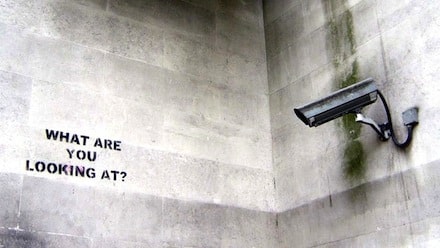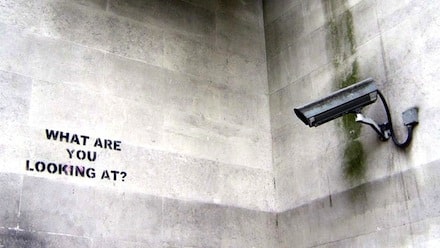
As we marked the 232nd anniversary of the signing of America’s governing charter in 1787, we have ample evidence that it continues to be violated by the federal officials charged with upholding it.
Last month, The Young Turks (TYT) news and talk network obtained the FBI’s 2018-2020 “Consolidated Strategy Guide,” which not only referenced the targeting of so-called “Black Identity Extremists” (BIE’s) but also those designated as engaged in “Anti-Government/Anti-Authority Extremism,” “Abortion Extremism,” or “Animal Rights/Environmental Extremism.” In a House Oversight and Reform subcommittee hearing in June, FBI Counterterrorism Division Director Michael McGarrity had admitted under questioning that the FBI could not cite a single example of a murder that could be linked to any African American activist group, including Black Lives Matter. He also claimed that the Bureau had eliminated the entire category of “Black Identity Extremists” from its lexicon. The document obtained by TYT casts doubt on McGarrity’s claim, particularly given the use of the term “Black Racially Motivated Extremists” (BRME) elsewhere in the Guide.
The Guide does not disclose the precise criteria the FBI uses to label individuals or groups as extremists or alleged threats, but it does discuss in some detail the aggressive “intelligence collection” posture the FBI took against so-called BIE’s. Page 1 of the section on BIE’s contains the following:
The FBIHQ-led Threat Mitigation Strategy IRON FIST was implemented to mitigate the potential threat posed by the BIE movement at the national level. IRON FlST will accomplish this by identifying actionable intelligence to directly support the initiation of FBI investigations and augment current efforts directed against BlEs. IRON FIST is designed to evolve and adapt to the ever-changing threat posed by BlEs, to proactively address this priority domestic terrorism target by focusing FBI operations via enhanced intelligence collection efforts. ln addition, FBIHQ works to develop potential [confidential human sources] CHSs and conduct assessments on the current BIE CHS base. Many BlEs are convicted felons who are prohibited possessors, therefore the FBI will continue to use their prohibited possessor status as a tactic to assist in mitigating the threat for potential violence.
Indeed, this “Threat Mitigation Strategy” is a template that the FBI is applying to other groups and individuals designated as “White Supremacy Extremists” (WSEs), as revealed on page 1 of the section on WSE’s:
The FBIHQ-led Threat Mitigation Strategy SUPREME RENDITION was implemented to mitigate the potential threat posed by WSE movements at the national level and will accomplish this by identifying actionable intelligence to directly support the initiation of FBI investigations and augment current efforts directed against WSEs. SUPREME RENDITION is designed to evolve and adapt to the ever-changing threat posed by WSEs, to proactively address this priority domestic terrorism target by focusing FBI operations via enhanced intelligence collection efforts. ln addition, FBIHQ works to develop potential CHSs and conduct assessments on the current WSE CHS base. Noting that many WSE subjects are convicted felons and are prohibited from legally possessing firearms, the FBI is exploiting the Dark Web or Dark Net to determine whether persons with a WSE ideology are using these non-indexed “hidden” websites and domains to procure firearms, explosives, murder-for-hire, or other illegal services in furtherance of their beliefs. Also, the FBI will use their prohibited possessor status as a tactic to assist in mitigating the threat for potential violence.
The Threat of an Ideological Test
That the FBI is using an ideological test of its own devising to determine whether a person seeking products or services on “the Dark Web” is a threat raises a host of potential constitutional issues, including whether the monitoring of a person’s online activities based on their ideology runs afoul of the First Amendment or the Brandenburg v. Ohio decision.
Under the broad rubric of “Racially Motivated Violent Extremism” (RMVE), the Guide notes on page 3 of the RMVE section that “Field offices will evaluate their need for an open Type 3 assessment file in regards to RMVE. An open assessment file allows for greater proactive collection techniques should the RMVE threat emerge in the wake of a police-involved incident that sparks potential RMVE activity.”
The FBI’s Domestic Investigations and Operations Guide (DIOG) describes a Type 3 assessment as follows:
Type 3 Assessment: Identify, obtain and utilize information about actual or potential national security threats or Federal criminal activities, or the vulnerability to such threats or activities.
The language is sweeping and allows for the collection of information on the basis of hypothetical, not actual, threats, with Field Offices encouraged to “conduct social media analysis of RMVE threats, as appropriate.” (p. 3, RMVE section) Exactly what constitutes a validated “RMVE threat” is not defined, and nowhere in the document is any reference made to avoiding social media monitoring or other intelligence-collection activities solely on the basis of First Amendment protected activities.
Even more troubling, there is now abundant evidence that the FBI’s focus has expanded beyond known or alleged terrorists or “extremists” groups to those involved in America’s immigration controversy.
The latest indicator came in the form of a Sept. 4 Yahoo! News story based on an FBI Phoenix Field Office “External Intelligence Note” dated May 30, 2019. The actual Yahoo! News story lede — “Exclusive: Document reveals the FBI is tracking border protest groups as extremist organizations” — was misleading in that the document obtained by Yahoo! News only referenced “Anarchist Extremist” groups, and only one by its acronym, BLF, presumably the Border Liberation Front, one of many groups opposed to Trump administration policies in the southwest border region. Even so, the report raises an obvious question: what other immigration-related groups might the FBI be monitoring?
Groups Targeted for Surveillance
Earlier this year, I submitted Freedom of Information Act (FOIA) requests to the FBI on 37 groups publicly working on immigration policy issues, some of them direct client-services organizations. Many of these FOIAs remain outstanding or are in varying stages of appeal or potential litigation. However, FBI FOIA responses received to date indicate that at least five of these groups — Chula Vista Partners in Courage, Pangea Legal Services, Immigration Hub, Kids In Need of Defense (KIND), and the Transgender Law Center — may have been targeted for surveillance.
For each of the groups listed above, the FOIA appeal response I received from the Department of Justice’s Office of Information Policy (OIP) contained the following language:
To the extent that your request could encompass any national security or foreign intelligence records, I have determined that the FBI properly refused to confirm or deny the existence of any national security or foreign intelligence records responsive to your request because the existence or nonexistence of any such responsive records is currently and properly classified. See 5 USC. § 552(b)(1).
In the world of FOIA, this kind of response is known as a “Glomar” — a reference to a 1981 FOIA case (Phillippi v. CIA, 655 F.2d 1325, 1327 (D.C. Cir. 1981), in which the D.C. Circuit Court of Appeals ruled that the CIA could refuse to confirm or deny even the very existence of information on a topic if the fact of its existence was itself deemed classified.
The 1981 case revolved around the efforts of a Rolling Stone reporter to get records of conversations between CIA Director William Colby and the heads of various news organizations that had learned about a Tom Clancy-like CIA operation to raise a sunken Soviet sub from the Pacific Ocean. The CIA’s argument, which the Court accepted, was that even the revelation of Colby’s efforts to kill the story would tip off the Soviets that the CIA might, in fact, have managed to salvage at least something from the sunken Soviet sub.
Since that 1981 D.C. appellate court decision, other federal courts have generally upheld executive branch invocations of Glomar responses to FOIA requests. In my view, those ill-considered decisions have now led to a much wider and far more dubious resort to Glomar responses by federal agencies and departments, in this case by the FBI as it relates to immigration policy activism by domestic US groups.
For the five groups in question in my FOIA actions, the FBI is asserting FOIA’s “national security” or (b)(1) exemption in a Glomar context. How can the provision of legal advice, counseling or other services to immigrants represent “a threat to national security?”
A Role for Congress
Congress should investigate whether the FBI is targeting these groups in the absence of a legitimate criminal investigative predicate and is using the Glomar exception (or other dubious FOIA evasion tactics) to conceal that activity from the public and the courts. As for the courts, federal judges should cease taking executive branch Glomar assertions at face value and should require the production of all relevant documents for in camera reviews whenever a federal agency or department invokes Glomar to dodge a FOIA request.
The FBI and other federal departments and agencies are trying to erect an impenetrable legal shield over their potentially illegal surveillance activities via the misuse of FOIA exemptions, either statutory or court-constructed, as in the case of Glomar. For the Constitution to have meaning and force, the public — including the Congress, the courts, and the press — must be able to establish what the executive branch is doing in our name and with our tax dollars, particularly when it comes to the use — or misuse — of federal surveillance powers. If we are on the cusp of a de facto COINTELPRO 2.0, the infamous Cold War-era FBI program of domestic spying and organizational disruption, we need to end it. Now.
Reprinted with permission from Just Security.

